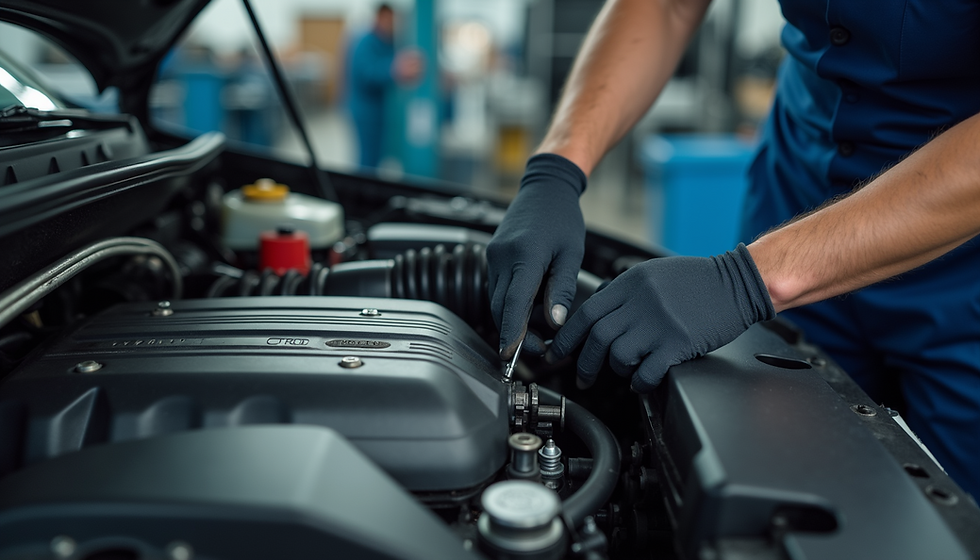Are Classic Cars from the 50s to 2000s Built Better Than Today's Models?
- Alan
- Oct 8
- 4 min read
The debate about whether classic cars from the 50s, 60s, 70s, 80s, 90s, and 2000s are better built than modern vehicles is alive and well. Car enthusiasts and casual drivers alike engage in spirited discussions over craftsmanship, materials, and overall durability. Many people believe that older cars exhibit superior construction and quality compared to today’s models. This post will dive into various aspects of car manufacturing—materials, technology, and longevity—to examine whether classic cars truly hold their value against newer innovations.
The Materials of Yesteryear
One of the biggest distinctions between classic cars and today's vehicles is the materials used in their construction. Cars built in the mid-20th century predominantly featured heavier, more robust metals. For example, classic models like the 1965 Ford Mustang used higher-purity steel, which typically provided superior durability.
Modern cars, while often made from galvanized steel that resists rust, raise questions about their overall sturdiness. Modern vehicles frequently include lighter materials like aluminum, which, while beneficial for fuel efficiency—by as much as 20% in some models—can compromise long-term durability. This trade-off prompts an important question: Are today's cars simply lighter, or do they lack the solid build quality of their predecessors?
The Allure of Chrome and Leather
Genuine chrome plating and real leather are iconic features of classic cars. For instance, the 1957 Chevrolet Bel Air is known for its distinctive chrome bumpers that not only enhanced its aesthetic appeal but also symbolized quality.
In contrast, many modern vehicles use plastic or lower-cost materials that imitate chrome. This can detract from the overall sophistication that chrome provided in earlier models. While some manufacturers still offer high-quality leather options, the rise in synthetic materials raises concerns about the feel and authenticity of modern car interiors. For example, a survey revealed that 65% of consumers prefer real leather over synthetic alternatives, indicative of the enduring value of authentic materials.
Technological Advancements
While material quality is important, technology significantly impacts car evolution. Today's vehicles come equipped with features like anti-lock brakes, airbags, and advanced driver-assistance systems. For example, statistics show that cars equipped with advanced safety features reduce accident risks by up to 40%. Moreover, innovations like Bluetooth connectivity and GPS navigation have transformed the driving experience.
However, the complexity of modern vehicles can increase maintenance costs, which some enthusiasts view as a drawback. Classic cars, known for their simpler mechanics, can often be more straightforward and cost-effective to repair. This difference in complexity has made older models appealing to those who enjoy hands-on automotive work.
Longevity and Reliability
One crucial factor to consider in this debate is longevity. Well-maintained classic cars can last for decades, with many becoming treasured family heirlooms. For example, vintage cars often see life spans of over 30 years when cared for properly. Enthusiasts often invest significant time and resources into restoring and preserving these vehicles.
Conversely, while modern cars are engineered to last and frequently come with warranties covering several years or miles, reliability is not guaranteed. Reports have indicated that about 15% of new cars experience significant issues within the first three years. This raises important questions about whether current models are inherently more durable.
The Weight Debate
Weight is another critical consideration when comparing classic and modern vehicles. To enhance fuel efficiency and reduce emissions, manufacturers of modern cars often strive to produce lighter vehicles. This can contribute to improved gas mileage, with some models increasing efficiency by over 30%. However, it also raises concerns about safety and durability.
The question remains: Are modern cars constructed with lighter materials that compromise quality, or do they maintain the weight of older models through advanced engineering? The answer varies from one model to another, emphasizing the need to analyze each vehicle's specifics.
The Cost of Ownership
Evaluating whether classic cars surpass modern vehicles also involves the cost of ownership. Maintaining a classic car can be more manageable, especially when dealing with simpler designs and mechanics. Enthusiasts often find joy in working on their cars, leading to a greater appreciation of craftsmanship.
In contrast, modern cars may incur higher repair costs due to their advanced technology and specialized components. Although these features provide convenience and safety, the potential for costly repairs can be a deterrent for some owners. This highlights the complexity of cost considerations across both eras.
The Emotional Connection
For many enthusiasts, the emotional connection to classic cars holds immense value. The nostalgia tied to older models can create a strong sense of pride. The distinctive designs, sounds, and driving experiences of cars like the 1969 Dodge Charger evoke feelings that simply cannot be matched by many modern vehicles.
Although modern cars may be efficient and packed with technology, they sometimes lack the character that many find appealing in classic designs. This emotional attachment plays a vital role in perceptions of quality and craftsmanship.
Final Thoughts
The discussion about whether classic cars from the 50s to 2000s are built better than modern vehicles is complex. Older cars often boast better materials, craftsmanship, and a unique charm, while modern vehicles deliver advanced technology, safety features, and fuel efficiency.
Ultimately, the answer may hinge on individual preferences and what each driver values most. For those who appreciate the artistry of classic cars, older models might seem superior. Conversely, those who prioritize safety and convenience may lean towards modern vehicles.
As the automotive industry progresses, it is essential to recognize the strengths and weaknesses of both classic and contemporary cars. Whether you’re a passionate classic car collector or a fan of the latest automotive innovations, both eras have undeniably shaped the world of automobiles.






Comments